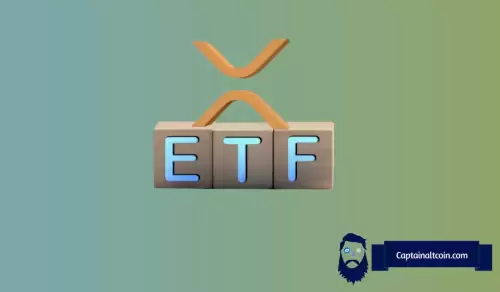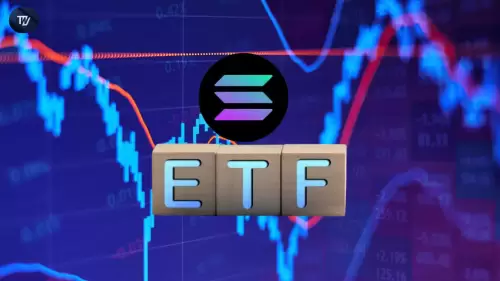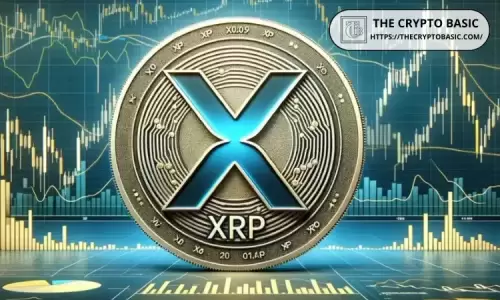 |
|
 |
|
 |
|
 |
|
 |
|
 |
|
 |
|
 |
|
 |
|
 |
|
 |
|
 |
|
 |
|
 |
|
 |
|
オーストラリアからの新しい研究では、亜鉛バッテリーの世界に波があり、より安価で、より安全で、長持ちするエネルギー貯蔵を約束しています。

Zinc batteries, long seen as a promising alternative to lithium-ion, are getting a serious upgrade. The buzz is all about a potential breakthrough in stability, and it could change how we store energy on a large scale.
リチウムイオンの有望な代替品と長い間見られている亜鉛バッテリーは、深刻なアップグレードを取得しています。話題はすべて、安定性の潜在的なブレークスルーに関するものであり、エネルギーを大規模に保存する方法を変える可能性があります。
The Zinc Battery Comeback
亜鉛バッテリーのカムバック
For years, zinc batteries have been touted as a safer, cheaper, and more sustainable option than their lithium-ion counterparts. The problem? They haven't been quite as powerful or long-lasting. But researchers in Australia may have just cracked the code, addressing what they call a “critical bottleneck” in cathode manufacturing.
何年もの間、亜鉛バッテリーは、リチウムイオンのカウンターパートよりも安全で安価で、より持続可能なオプションとして宣伝されてきました。問題?彼らはそれほど強力でも長持ちしていませんでした。しかし、オーストラリアの研究者は、カソード製造における「重要なボトルネック」と呼ばれるものに対処し、コードをクラックしただけかもしれません。
The Dry Electrode Revolution
乾燥電極革命
Professor Shi-Zhang Qiao and his team at the University of Adelaide have pioneered a new dry electrode technique that could be a game-changer. Instead of the traditional wet mixing of iodine, they're mixing active materials as dry powders and rolling them into thick, self-supporting electrodes. Think of it like making a super-dense, power-packed pancake.
Zhang Qiao教授とアデレード大学の彼のチームは、ゲームチェンジャーになる可能性のある新しい乾燥電極技術を開拓しました。ヨウ素の伝統的な濡れた混合の代わりに、それらは活性材料を乾燥粉末として混合し、それらを厚い自立した電極に転がしています。超密集したパワー満載のパンケーキを作るようなものだと考えてください。
And here's the kicker: they're adding a dash of 1,3,5-trioxane to the electrolyte. This turns into a flexible protective film on the zinc surface during charging, preventing those pesky dendrites from forming and shorting the battery. It's like giving the zinc anode a tiny bodyguard.
そして、ここにキッカーがあります。彼らは電解質に1,3,5-トリオキサンのダッシュを追加しています。これは、充電中に亜鉛表面の柔軟な保護膜に変わり、厄介な樹状突起がバッテリーを形成して短絡するのを防ぎます。亜鉛アノードに小さなボディーガードを与えるようなものです。
Why This Matters
なぜこれが重要なのか
This new technique allows for a record-high loading of active material – a whopping 100mg per cm2, compared to the wet-processed electrodes which typically top out below 2mg. Plus, these dense, dry electrodes reduce iodine leakage, further boosting performance. The result? Pouch cells retained 88.6% of their capacity after 750 cycles, and coin cells kept nearly 99.8% after 500 cycles.
この新しい手法により、通常、2mg未満で覆われている湿潤加工電極と比較して、cm2あたり100mgのなんと100mgであるアクティブ材料の記録的な負荷が可能になります。さらに、これらの密な乾燥電極はヨウ素漏れを減らし、パフォーマンスをさらに高めます。結果?ポーチセルは、750サイクル後に容量の88.6%を保持し、コインセルは500サイクル後にほぼ99.8%を維持しました。
The Future of Energy Storage
エネルギー貯蔵の未来
Professor Qiao believes this technology could benefit energy storage providers, especially for renewable integration and grid balancing. Industries needing large, stable energy banks, like utilities and microgrids, could be early adopters. They're even exploring reel-to-reel manufacturing to scale up production.
Qiao教授は、この技術は、特に再生可能な統合とグリッドバランスのために、エネルギー貯蔵プロバイダーに利益をもたらす可能性があると考えています。ユーティリティやマイクログリッドなど、大規模で安定したエネルギー銀行を必要とする業界は、早期採用者になる可能性があります。彼らは、リールからリールの製造を調査して生産を拡大しています。
The team is aiming to double the overall system energy density from around 45 watt-hours per kilogram (Wh/kg) to around 90 Wh/kg. While still behind lithium-ion batteries (150–250 Wh/kg), the improved stability and cost-effectiveness make zinc batteries a serious contender.
チームは、システム全体のエネルギー密度を1キログラムあたり約45ワット時(WH/kg)から約90 WH/kgに2倍にすることを目指しています。まだリチウムイオン電池(150〜250 WH/kg)の背後にある間、安定性と費用対効果の向上により、亜鉛バッテリーは深刻な競争相手になります。
A Grain of Salt (and a Stablecoin Aside)
一粒の塩(および馬鹿げた馬鹿げたものは脇にあります)
Now, before we declare lithium-ion obsolete, let's keep things in perspective. The energy density still lags behind. But the potential for cheaper, safer, and longer-lasting batteries is undeniable. It's a step in the right direction.
さて、リチウムイオンを廃止する前に、物事を視野に入れておきましょう。エネルギー密度はまだ遅れています。しかし、より安価で、より安全で、長持ちするバッテリーの可能性は否定できません。それは正しい方向への一歩です。
Speaking of stability, it’s not quite the same thing, but have you ever heard of stablecoins? They're the chilled-out cousins of regular cryptocurrencies, attempting to stay close to the value of something stable, like the US dollar or gold. Unlike Ethereum, which is as stable as a toddler on a trampoline, stablecoins try to keep it cool. The goal is to have digital assets without the price rollercoaster ride. Kinda like zinc batteries compared to lithium. Just remember to do your homework!
安定性について言えば、それはまったく同じことではありませんが、Stablecoinsについて聞いたことがありますか?彼らは通常の暗号通貨の冷やしたいとこであり、米ドルや金のような安定したものの価値に近いままにしようとしています。トランポリンの幼児と同じくらい安定したイーサリアムとは異なり、スタブコインはそれを涼しくしようとします。目標は、価格のジェットコースターに乗らずにデジタル資産を持つことです。リチウムと比較した亜鉛電池のようなものです。宿題をすることを忘れないでください!
The Bottom Line
結論
This breakthrough in zinc battery stability could be a game-changer for large-scale energy storage. Cheaper, safer, and longer-lasting batteries? Sign us up! It looks like the future of energy storage might just have a little more zinc in it. Who knew?
亜鉛バッテリーの安定性におけるこのブレークスルーは、大規模なエネルギー貯蔵のためのゲームチェンジャーになる可能性があります。安価で、より安全で、長持ちするバッテリー?サインアップしてください!エネルギー貯蔵の未来には、もう少し亜鉛が含まれているようです。誰が知っていましたか?
免責事項:info@kdj.com
提供される情報は取引に関するアドバイスではありません。 kdj.com は、この記事で提供される情報に基づいて行われた投資に対して一切の責任を負いません。暗号通貨は変動性が高いため、十分な調査を行った上で慎重に投資することを強くお勧めします。
このウェブサイトで使用されているコンテンツが著作権を侵害していると思われる場合は、直ちに当社 (info@kdj.com) までご連絡ください。速やかに削除させていただきます。






























































